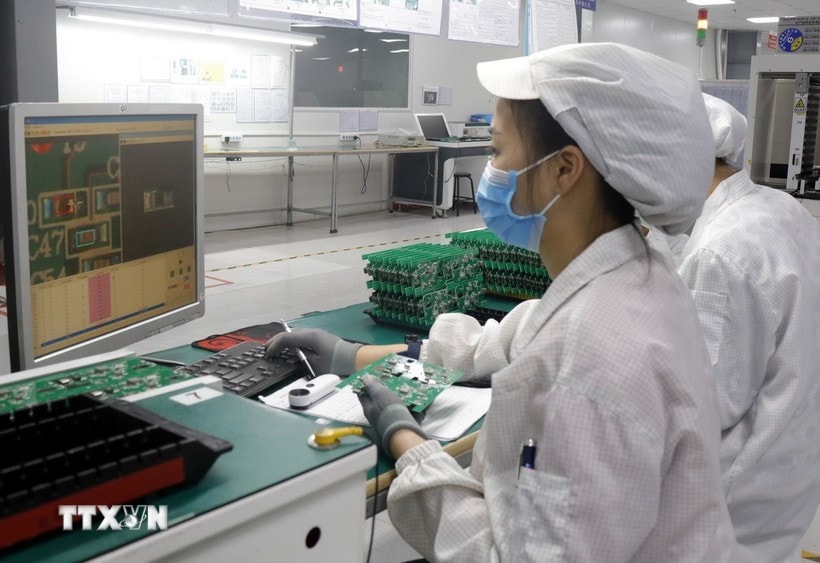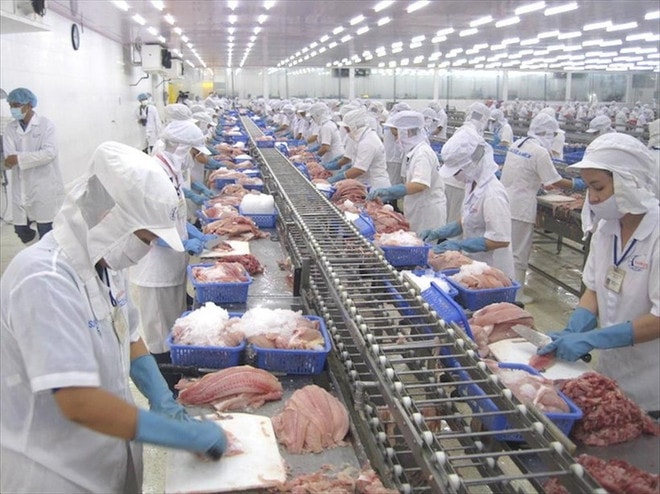Vietnam on track to become Asia's next "tiger economy": AP
In its article published on August 13, AP wrote “Vietnam aims to get rich by 2045 and become Asia’s next “tiger economy” - a term used to describe the earlier ascent of countries and territories like the Republic of Korea (RoK) and Taiwan (China).

Vietnam is moving closer to its goal of becoming Asia’s next “tiger economy,” driven by strong reforms and a vision for ushering in “a new era of development” in the future, according to the US-based Associated Press (AP).
In its article published on August 13, AP wrote “Vietnam aims to get rich by 2045 and become Asia’s next “tiger economy” - a term used to describe the earlier ascent of countries and territories like the Republic of Korea (RoK) and Taiwan (China).
However, to achieve this goal, Vietnam must reconcile growth with reforms, while tackling challenges such as an aging population, climate change and institutional reform, the article wrote.

It noted that the pressure is mounting as the US - one of Vietnam’s largest trading partners - imposes tariffs on several economies, including Vietnam, over trade surpluses, a reflection of Vietnam’s astounding economic trajectory in recent times.
According to AP, in 1990, the average Vietnamese could afford about 1,200 USD worth of goods and services a year, adjusted for local prices. Today, that figure has risen by more than 13 times to 16,385 USD.
Vietnam’s transformation into a global manufacturing hub with shiny new highways, high-rise skylines and a booming middle class has lifted millions of its people from poverty. But its low-cost, export-led boom is slowing and the Southeast Asian nation faces a growing obstacle to its proposed reforms - expanding private industries, strengthening social protections and investing in technology and green energy - from climate change.
A surge in foreign investment has helped Vietnam expand its export activities. Once-quiet suburbs have been replaced with industrial parks where trucks rumble through sprawling logistics hubs that serve global brands, the article said.
Vietnam ran a 123.5-billion-USD trade surplus with the US in 2024. Amid US President Donald Trump’s push to reduce trade deficits with other countries, the US administration imposed a 20% tariff on imports from Vietnam, potentially affecting some of the country’s key export sectors.
However, AP quoted former US Ambassador to Vietnam Daniel Kritenbrink as saying that Vietnam’s focus was on its tariffs compared to those of its neighbors and competitors. He noted that “as long as they’re in the same zone, in the same ballpark, I think Vietnam can live with that outcome.”
Vietnam was preparing to shift its economic policies even before the US’s tariffs threatened its model of churning out low-cost exports for the world, aware of what economists call the “middle-income trap,” when economies tend to plateau without major reforms.
The Southeast Asian nation is counting on high-tech sectors like computer chips, artificial intelligence (AI) and renewable energy, providing strategic tax breaks and research support in cities like Hanoi, Ho Chi Minh City, and Da Nang.
It’s also investing heavily in infrastructure, including civilian nuclear plants and a 67 billion-USD North–South high-speed railway, that will cut travel time from Hanoi to Ho Chi Minh City to eight hours.
Vietnam also aspires to become a global financial centre, with its plan to set up two special financial centres, in bustling Ho Chi Minh City and in the central costal city of Danang, with simplified rules to attract foreign investors, tax breaks, support for financial tech startups, and easier ways to settle business disputes, the article said.
Underpinning all of this is institutional reform, it noted, adding that ministries are being merged, low-level bureaucracies have been eliminated and administrative units have been consolidated into regional economic centres with deeper talent pools.
In May, the Communist Party of Vietnam (CPV) passed Resolution 68, calling private businesses the “most important force” in the economy, pledging to improve the business environment, remove barriers, and create conditions for breakthroughs.
So far, large multinationals have powered Vietnam’s exports, using imported materials and parts and low cost local labour. Local companies are stuck at the low-end of supply chains, struggling to access loans.
The new policy prioritises technology-investing enterprises, offers opportunities to participate in major projects such as the North–South high-speed railway. By 2030, Vietnam hopes to elevate at least 20 private firms to a global scale.
The country’s “golden population” window - when working-age people outnumber dependents - will close by 2039 and the labour force is projected to peak just three years later, the article said.
It cited experts, saying that that Vietnam needs to focus on expanding access to preventive healthcare, gradually raising the retirement age and drawing more women into the formal workforce would help offset labour gaps and promote “healthy aging”./.
